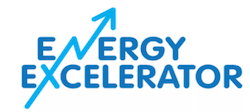 A Nevada-based biodiesel maker has acquired its biggest supplier of feedstock the the San Francisco area. Bently Biofuels announced it bought Got Grease, a Bay Area waste oil and grease trap pumping company.
A Nevada-based biodiesel maker has acquired its biggest supplier of feedstock the the San Francisco area. Bently Biofuels announced it bought Got Grease, a Bay Area waste oil and grease trap pumping company.
Got Grease collected used cooking oil throughout the San Francisco, peninsula, East Bay, and Marin areas up to Sacramento. This used cooking oil was then sold to biofuels producers. As one of Got Grease’s largest customers, it was a natural fit for Bently Biofuels Company to expand their used cooking oil collection services by purchasing the business assets. This expansion means an addition of approximately 12 jobs in the Bay Area.
Bently Biofuels has been producing biodiesel from recycled used cooking oil since 2005.









